Traffic Rules in Japan
Driver’s License
To drive a car in Japan, you need one of the following.
(A) International Driving Permit
International Driving Permit issued by certification authorities of contracted countries/regions that are signatories to the Geneva Convention.
At the same time, you must present your passport.
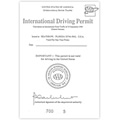
- ① International driving permit
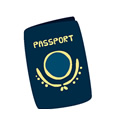
- ② Passport
- An International Driving Permit is valid for one year from the issuance date. Validity of driving in Japan is for one year from the date of arrival in Japan (confirmed by the immigration stamp stamped on the passport)
- An International Driving Permit approved based on the Paris Convention (1926), Washington Convention (1943) and Vienna Convention (1968) is not valid in Japan.
- If the form of the International Driving Permit greatly differs from the form of the Geneva Convention, such permit is not valid.
(B) Foreign Driver’s License
If you have a driver’s license from Taiwan, Switzerland, Germany, France, Belgium, Slovenia or Monaco, you can use it for one year after arriving in Japan.
You will need to show the Japanese translation of a foreign driver’s license and your passport at the same time.
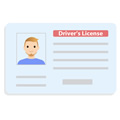
- ① Valid foreign driver’s license
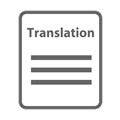
- ② Japanese translation of the domestic driver's license

- ③ Passport
- The Japanese translation of your driving license must be issued by a Japanese consulate/embassy in your country or the Japan Automobile Federation (JAF).
- In the case of a Taiwanese license, you are required to have the Japanese translation issued by JAF or the East Asia Relations Commission.
- A foreign driver’s license is valid for one year from the date of arriving in Japan (confirmed by the immigration stamp stamped on the passport). However, if the expiry date of the foreign driver’s license is earlier than one year, the validity is until the expiry date of the license.
(C) Japanese Driver’s License
Driver’s license issued by the Public Safety Commission of Japan.

- ① Japanese driver’s license
Basic Driving Rules in Japan
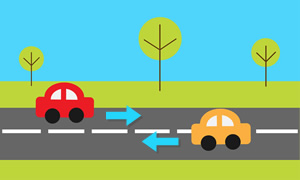
Driving on the left
All cars must drive on the left side of the road.
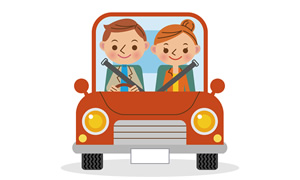
Fasten seat belts for all passengers
All passengers must fasten the safety seat belt.
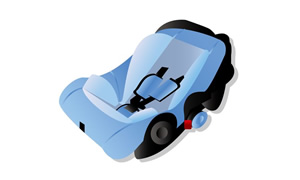
Use of child seat
Children under six years old must be seated on child seats for safety.
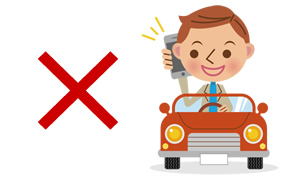
Do not use a phone while driving
You must not use a phone while driving. Please stop the vehicle at a safe location if you wish to use a phone.

Signals
A red signal light means “stop” and a green signal light means “go.” If a signal in front of you is red, you must wait until the signal turns green. If a green arrow flashes, however, you can drive in the direction of the arrow.

Sign of Stop
You must completely stop at a stop sign. Please check right and left sides to confirm safety. Even without a stop sign, you must always stop before crossing a railway line.

Give priority to oncoming cars when turning right
When turning right, you must give priority to oncoming cars driving straight and turning left. Pease be aware of pedestrians while turning right or left at an intersection.
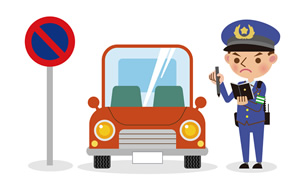
Please do not park on the street
Parking on the street is a violation of law. Please do not park on the road even for a short period of time. Use a designated parking space.
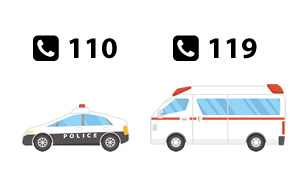
Call police on 110 and an ambulance on 119
In the case of an accident, look around first and check the situation. Then call police on 110 to report the situation of the accident and the location. Please call an ambulance on 119 if there are any injuries. You are required to call the police immediately at the accident location no matter how minor the accident is.

Driving under the influence of alcohol is prohibited
Driving under the influence of alcohol is illegal. Never drink and drive. Any person who offers alcohol to a driver will also be strictly punished.
Basic traffic signs

- Stop

- Slow
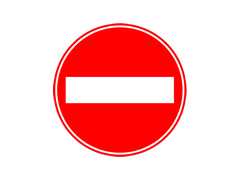
- No entry

- Speed limit
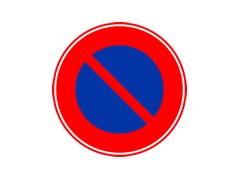
- No parking
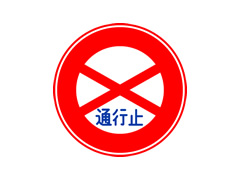
- Road closed to all
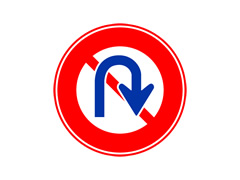
- No U-turn
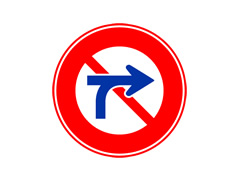
- No right-turn crossing ahead
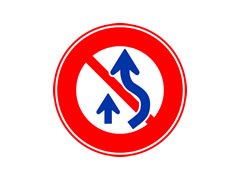
- No overtaking
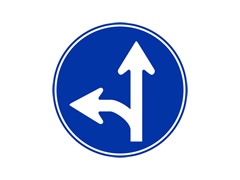
- Only designated directions permitted

- Only designated directions permitted

- Only designated directions permitted
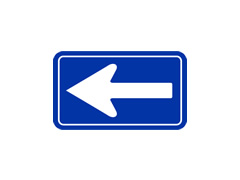
- One-way street
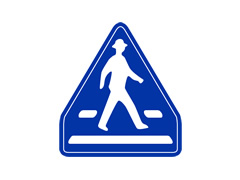
- Pedestrian crossing
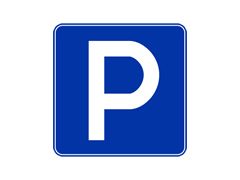
- Parking allowed

- Falling rocks

- Wild animals crossing
Road signs in Japan
(WIKIPEDIA)
For more detailed guidance, please refer to Wikipedia.

